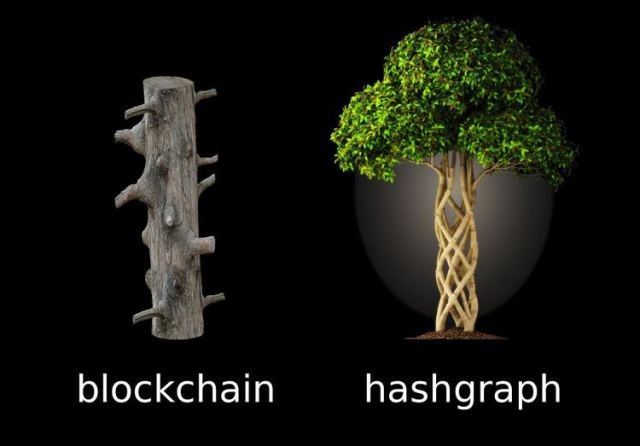Bitcoin, the pioneer of Blockchain, has shown us the potential (and the problems) of distributed-ledger technology. By the end of 2017 the Bitcoin Network has grown slow and expensive to use. This has been a first hand look into scalability issues of Bitcoin and Blockchain. One company, Swirlds, has been developing a new system that solves the scalability issues of Blockchain related systems.
According to Swirlds, Hashgraph is faster, cheaper, and more efficient than Blockchain. This has an extremely high amount of potential; not just for financial uses, but for any system that needs to achieve full consensus on information.
The Hashgraph website FAQ provides a basic explanation on how Hashgraph works:
"How does it work?
Hashgraph uses two unique techniques (1) Gossip about Gossip and (2) Virtual Voting to achieve fast, secure, and fair consensus.
Gossip is a well-known computer science term, which can be defined as calling any random node and telling that node everything you know, that it does not know. In distributed ledgers, the “baseline” or minimum bandwidth required is that the transactions go to every node. A gossip protocol can achieve this transfer of information exponentially fast. Gossip about Gossip refers to attaching a small additional amount of information to this Gossip/transaction payload, which are two hashes containing the last two people talked to (hence, gossiping about the information gossiped). Using this information, a Hashgraph can be built and constantly updated as more information is gossiped by each node.
Once the Hashgraph is built, it is extremely easy to know what a node would vote, because we know what each node knows, and when they knew it. We can now use this data as an input to a 30-year-old voting algorithm (which have strong security guarantees, maths proofs of being asynchronous Byzantine fault tolerant but typically lack the speed necessary for a real-world implementation), and know which transactions have reached consensus quickly.
The result of using this methodology is that we get the benefit of 30 year old voting algorithms which have have strong math proofs of being asynchronous Byzantine fault tolerant (meaning that we know when we will achieve consensus, have a guarantee that we will reach consensus, and have mathematical proofs that make no assumptions about the speed of the internet, due to firewalls, DDoS attacks, viruses or botnets), speed (due to use of a gossip protocol) and fair ordering and time stamping on every event."
To learn more about Hashgraph, you can visit their website to read the whitepapers @ https://hashgraph.com/ and/or watch the documentary: “From Bitcoin To Hashgraph: The Crypto Revolution – Hidden Secrets Of Money Ep 8 “, By Investor Mike Maloney.

There is only one drawback to Hashgraph, the company Swirlds has patented the new technology. There aren’t any cryptocurrencies based off of Hashgraph yet, but be sure when there are, we will see the rise of the next Bitcoin and Blockchain.
Happy New Year!
coinpress21
(21coinpress.com)
Hi! I am a robot. I just upvoted you! I found similar content that readers might be interested in:
https://hashgraph.com/faq/
A hash graph can be encoded on a blockchain and vice-versa.
can you expand on this plse? / ie.. blockchain will still see big area eg. nano, iota, vechain..?